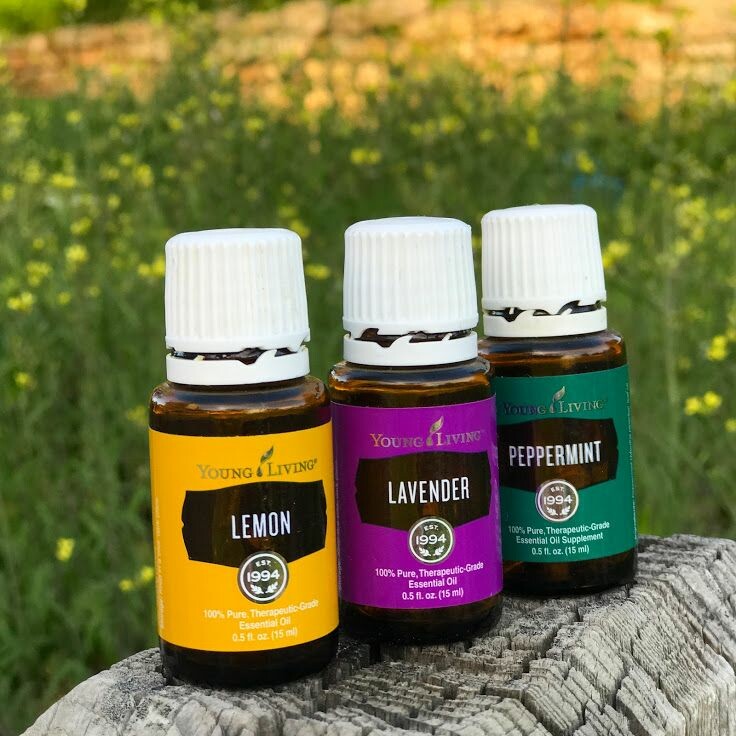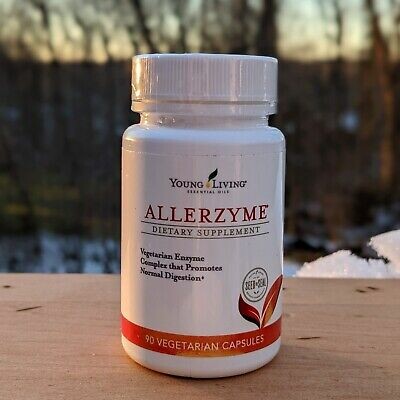61 Ways to Thieves
One Cleaner Replaces Them All!
...And it's not harmful!
——————————————————-
If you want to rid your home of chemical cleaners, toss out those Hall of Shame products and replace them with just one cleaner— Thieves Household Cleaner. It is an all-natural, all-purpose, nontoxic cleaner made with the powerful Thieves essential oil blend. It does NOT contain those big bad phthalates or other harsh, harmful chemicals. And one bottle will clean EVERYTHING in your home! Don't mess with multiple bottles and products.
We use them not only all through our house but also through our barn and with our animals.
We use Thieves Household Cleaner to clean
Formulated with the power of Young Living’s Thieves oil blend, you can get a deep clean without dangerous or synthetic ingredients. Thieves cleaner also includes the scent of Lemon essential oil for an even more uplifting aroma and more vigorous clean. Chores will feel like less of a chore with the sweet-and-spicy scent and effective cleaning power of Thieves Household Cleaner.
Where can I use Thieves?
EVERYWHERE!!
EVERYWHERE!!
1. Oven (spray Thieves Cleaner full strength and let sit for an hour, rinse and wipe clean)
2. Laundry (1 capful Thieves Cleaner in 1 cup water, add to water for the wash cycle or add 1 capful of Thieves Cleaner to the soap bin at beginning of the wash)
3. Paint stains (washing the affected area, clothes or surface with Thieves Cleaner full strength may help to take out the stain)
4. Juicing Machine (soak for 30 minutes the plastic and or metal cutting blades in a solution of full strength Thieves Cleaner with 3 Detoxzyme capsules (From Young Living) then clean with a nylon scrub brush)
5. Automatic Dishwasher (add 1 capful Thieves Cleaner to the bottom of the dishwasher)
6. Hand Dish washing (add 1 capful Thieves Cleaner to a sink of hot water (does not suds, but will get them clean).
7. Hand Washing extra dirty pots and pans
8. Counter tops - let sit for 1-2 minutes, wipe dry.
9. Refrigerator
10. Stove and oven fronts
11. Stove top
12. Shower tile
13. Mop floor
14. Toilet
15. Shower gunk
16. Shower glass
17. Windows
18. Window Sills
19. Base boards
20. Bathroom counters
21. Bathroom sinks
22. Shower curtain
23. Bath tub
24. Liquid hand soap
25. Use as dryer softener
26. Spots on fabric
27. Carpet Stains
28. Degreasing
29. Walls
30. Floors
31. Carpet (use in shampooer)
32. Silk plants
33. Concrete, patios, sidewalks, driveways, home siding or brick on home. If gunk is bad may need to spray full strength Thieves Cleaner.
34. Wallpaper removal – spray wallpaper area as needed, let sit and then pull off the paper. This will also help clean the woodwork on the way down and the flooring.
35. Phone
36. Door knobs
37. Toilet seats
38. Baseboards
39. Pet odors
40. Dog & cat beds
41. Live plants
42. Grout
43. Car interior
44. Patio furniture
45. Mini-blinds
46. Tires
47. BBQ grill grates
48. Office
49. Ceiling fan blades
50. Sneakers
51. Shoe cleaner
52. Luggage cleaner
53. Purses and handbags
54. Luggage
55. Exercise equipment
56. Clean sink overnight - spray, wipe in the morning
57. Diaper pail
58. Crib
59. High chairs
60. Toys
61. Anywhere & Everywhere!
Check out the entire line of Thieves products by clicking below.
Springtime is not that far off and for those of us on farms and homesteads, that can often lead to a lot of unnescessary headaches. As we are cleaning out chicken coops, it means extra dust and mold flying around. Digging in the garden can kick up even more. Add in the budding trees, the cotton wood that flies around and the fresh flying pollen and sometimes even just taking a deep, clean breath outside can be a challenge.
Check out these three tips that are the foundation of our springtime routine when it comes to surviving (and thriving) when when the spring breezes start blowing.
- LLP Roller
- AllerZyme Capsules
- Lavender Copaiba Nasal Rinse
LLP Roller
This is a must have roller blend when it comes to springtime (or anytime!!) sinus survival. The base recipe is Lavender, Lemon, and Peppermint. Start there and add any other oils listed as desired to suit your specific needs! |
 |
|
Other great oils to include in this blend include: Copaiba, Dorado, Azul, Ledum, DiGize, R.C., Raven. (DIGIZE is Amazeballs for sinuses!!!)
This LLP blend can easily be converted and used in a capsule if you choose. Choose the Vitality oils for this usage, drop only 1-2 drops of each oil into a vegetable capsule and use daily, as needed. I love using my oils this way and always feel amazing afterwards!
LAVENDER COPAIBA NASAL RINSE
Grab your Neti-pot and whip up your own oil-infused sinus rinse.
- 5 drops Lavender essential oil
- 5 drops Copaiba essential oil
- 6 Tbsp colloidal silver
- Mix well and store in a sealed glass jar. To use, mix 1 tsp of oil mixture into 1 1/2 cups of distilled water then add to your Neti pot and use as needed.
AllerZyme Capsules
AllerZyme is one of my favorite supplements that Young Living offers and is a huge support tool when it comes to respiratory needs. This enzyme complex is specifically designed for individuals with dietary or environmental concerns! Take one capsule up to three times daily before a meal or as desired. If you know the seasonal changes are coming, start giving your body support as early as possible. I find that my body responds best to this supplement when taken before bed. Usually 2 capsules is what my body needs. |  |
I have made it easy for you to find all of these products that are discussed in one simple spot. Simply click this link and add to cart. VOILA! You are on your way to a healthier, happier, breath easier spring!
Happy Spring!

Wait, What? “But I thought you loved oils?” I do! Trust me I DO!!! But it’s not about them.
I started my journey into natural products around 23 years ago. I remember my very first natural product was Sambucol, an elderberry syrup from the store. We used it daily, and added extra when we were fighting a cold or virus of some sort. Next I ventured into colloidal silver, incredibly cautiously because as we started using it, the “blue man” became popular on TV. Remember him? His whole body was blue because he supposedly drank gallons of the stuff a day and the silver colored his skin (and organs). That was crazy!!!
Next came 2 home births and I was feeling like I was starting to embrace some sort of alternate hippy life. (Isn’t it strange that we have somehow labeled the way we SHOULD be living as some sort of alternative lifestyle? It’s the way we were designed to live and function!)
Essential Oils entered my life in 2014 and trust me I fought them tooth and nail. I was NOT interested in the least. I thought they were weird. I thought they stunk. I thought they were too “hippy”. (There I go again with that label!)
And then I experienced their power, their magic, their strength. Our journey didn’t start glamorous. No huge testimony to share….just a wart! A wart that was destroyed. A wart that never returned. But that little wart led to life changing experiences using the little bottle of magic, both for my family and our animals but also for many friends.
But it’s not about the oils. I don’t “sell” oils. I actually hate those words! It’s not about me getting as many random little bottles into your home that you may never use. It’s not about getting you ordering a certain amount of product every single month like some people do. It’s about finding what you need to change your life. It’s about helping remove some of the stress and toxic load your body is dealing with so it can function better.
It’s about giving you options! You can be with so many of these other great companies, plexus, singular, Amare, Q, whatever, but about the daily grins? What about when you need something for some head tension or some stomach discomfort? What about the day you have to drive the Mackinac Bridge and are feeling a bit uneasy? My job is to give you alternatives so you aren’t reaching for the little pills. You’ve been working so hard to change your life and your health then grab for the toxins???
My goal is to get you using more natural minded products to give you “alternatives”.
It’s not about the oils.
It’s about finding solutions for the issues you are facing, the challenges you are needing answers for. It’s about working WITH you and your body to bring you back to wellness and wholeness-mentally, physically, emotionally and spiritually.
It’s about partnering WITH YOU!
It’s not about the oils! It’s about YOU!
Kelly

